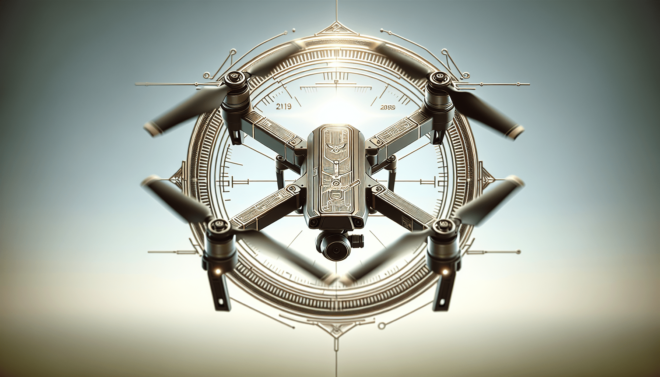How Do I Track Objects In Drone Footage Using DaVinci Resolve?
How do I track objects in drone footage using DaVinci Resolve? If you’re looking to improve your editing skills and add some professional-level effects to your drone footage, object tracking is a powerful tool to have in your arsenal. In this article, we’ll guide you through the process of tracking objects in drone footage using DaVinci Resolve, a popular video editing software known for its robust features and capabilities.
Getting Started with Object Tracking in DaVinci Resolve
So, you’ve captured some stunning aerial shots with your drone and now you want to enhance them by tracking objects within the footage. DaVinci Resolve offers a comprehensive set of tools for object tracking, making it easier for users to achieve smooth and precise tracking results.
Understanding Object Tracking
Object tracking is a technique used in video editing to follow a specific object or element within a video clip. By placing tracking markers on the object of interest, the software can track the movement of the object frame by frame, allowing for various editing effects to be applied seamlessly.
Setting Up Your Project
Before you can start tracking objects in your drone footage, you’ll need to set up your project in DaVinci Resolve. Make sure you have imported your drone footage into the software and placed it on the timeline. Select the clip that contains the object you want to track and ensure that it is selected in the timeline for editing.
Object Tracking Techniques in DaVinci Resolve
Once you have your project set up, it’s time to delve into the various object tracking techniques available in DaVinci Resolve. Let’s explore some of the most commonly used tracking methods used in the software.
Point Tracking
Point tracking involves placing a tracking point on a specific object or element within a video clip. The software then tracks the movement of that point frame by frame, allowing you to apply effects or make adjustments to that tracked point.
Planar Tracking
Planar tracking is a more advanced tracking technique that involves tracking a plane or surface within a video clip. This method is often used for tracking larger objects or elements that have distinct geometric shapes, making it easier to apply effects or adjustments to the tracked area.
Fusion Page Tracking
DaVinci Resolve’s Fusion page offers additional tracking capabilities for users looking to create more complex visual effects. By utilizing the Fusion tools, you can track objects in 3D space and apply sophisticated effects to your drone footage.
Step-by-Step Guide to Object Tracking in DaVinci Resolve
Now that you are familiar with the different object tracking techniques in DaVinci Resolve, let’s go through a step-by-step guide on how to track objects in your drone footage using the software.
1. Selecting the Object to Track
Start by selecting the object or element within your drone footage that you want to track. This could be a moving car, a person, or any other object that stands out in the scene.
2. Adding a Tracker Point
Once you’ve identified the object to track, add a tracking point to that object. In DaVinci Resolve, you can do this by selecting the tracker tool and placing it on the object within the footage.
3. Initiating the Tracking Process
With the tracker point in place, initiate the tracking process in DaVinci Resolve. The software will start analyzing the movement of the tracked point frame by frame, creating a path of movement for that object.
4. Adjusting the Track
During the tracking process, you may need to make adjustments to the track to ensure accuracy. Use the tools available in DaVinci Resolve to adjust the tracking point and correct any errors in the tracking path.
5. Applying Effects or Adjustments
Once the object has been successfully tracked, you can now apply effects or make adjustments to that object within the footage. This could include adding text, graphics, or other visual elements that follow the tracked object’s movement.
6. Fine-Tuning the Track
After applying effects, fine-tune the track to ensure that the object remains accurately tracked throughout the entire clip. Make any necessary adjustments to the track to maintain a smooth and seamless tracking effect.
7. Rendering and Exporting
Once you are satisfied with the object tracking in your drone footage, render the final clip in DaVinci Resolve and export it in your desired format. You can now showcase your professionally edited drone footage with impressive object tracking effects.
Tips for Successful Object Tracking in DaVinci Resolve
Object tracking can be a challenging process, especially for beginners. Here are some tips to help you achieve successful object tracking results in DaVinci Resolve:
- Choose objects with clear and distinct features for tracking, as this will make the tracking process easier and more accurate.
- Utilize keyframes to manually adjust the tracking path in areas where automatic tracking may not be precise.
- Experiment with different tracking techniques to find the one that works best for the object and scene you are tracking.
- Take the time to refine and fine-tune your tracks to ensure a seamless and professional-looking result.
- Practice object tracking regularly to improve your skills and become more confident in using this powerful editing tool.
Conclusion
Object tracking in drone footage using DaVinci Resolve can elevate the quality of your videos and provide a professional touch to your editing projects. By following the step-by-step guide and tips provided in this article, you can master the art of object tracking and create visually stunning effects in your drone footage. Experiment with different tracking techniques, practice regularly, and enjoy the creative possibilities that object tracking has to offer in DaVinci Resolve.

